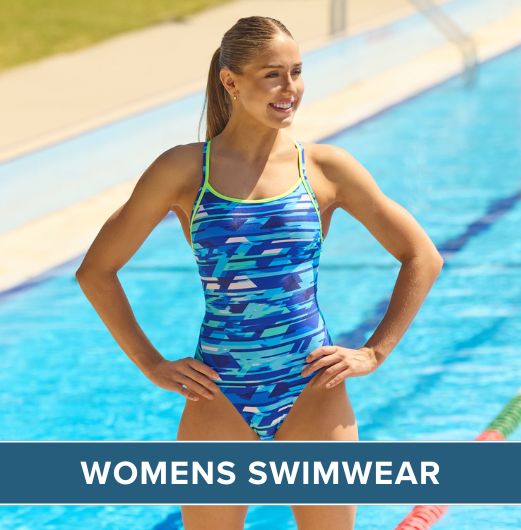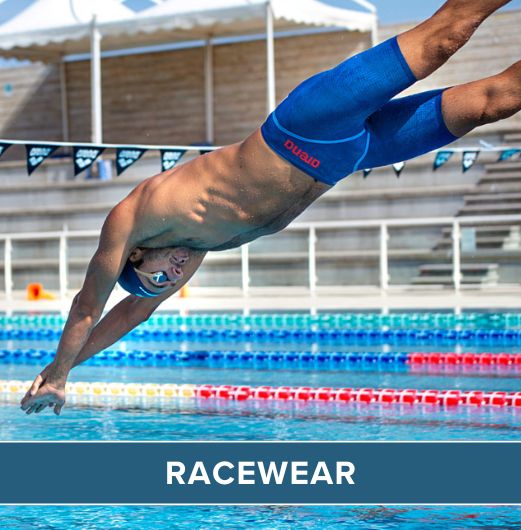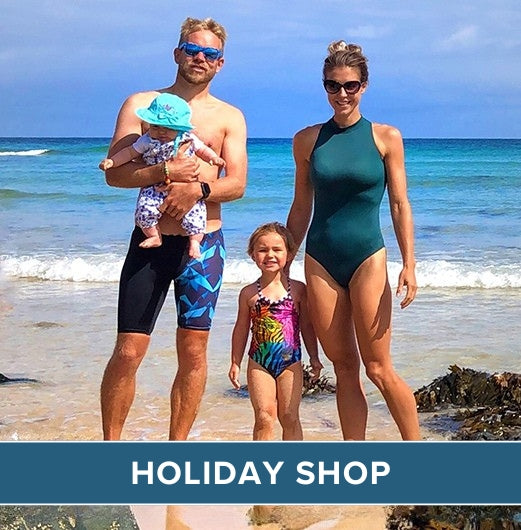Ever wondered how the top swimmers in the world swim so fast? Well look no further as the UK F-Team have got you covered.

The UK F-team are athletes sponsored by Funky Trunks and Funkita swimwear. Aimee Willmott, Molly Renshaw and Max Litchfield are just some of the big GB names sponsored by the brand. These guys know what they’re talking about and have shared with us some of their top tips for fast swimming.
When swimming freestyle try not to bury your head and look too far down. Try looking at a 45-degree out in front, as this will improve your body line. – Ellie Faulkner (Double Olympian)
Timing on butterfly is really important so this is something I would recommend you work on. The big kick, little kick drill really helps to time the breath. The better your timing the more rhythm and momentum you carry through the stroke making it easier and faster. - Tain Bruce (Scottish Record Holder)
Rotation is really important when swimming freestyle and especially during backstroke. You don’t want to rotate too far, as this makes you slower, but the closer you can get to a 75-dregree angle the more water you are able to catch and press during each arm pull. – Aimee Willmott (Olympic Finalist)
Breastroke is really easy to rush but a faster stroke rate doesn’t always mean faster swimming. Hold the glide phase at the end of each stroke to maximise the power from your kick. - Molly Renshaw (Olympic Finalist)
Enjoy what you are doing and don’t put too much pressure on yourself especially when racing. The more relaxed you are the faster you can swim. - Abbie Wood (European Junior Gold Medalist)
When racing stay relaxed, stay focused and swim your own race. Trust the training you have done and let the race flow. - Max Litchfield (400 IM Commonwealth Record Holder)
***
Finally, we asked you what you wanted to know, so here are some of your questions answered by the F-Team!
How much of being an Olympic swimmer is based on your genetics (wing span/hand size etc..) and how much is based on training?
If you were to look at the F-Team as a group of swimmers we’re all completely different shapes and sizes so it’s almost impossible to state what genetics produce good swimmers. In general fly swimmers have shorter legs and a long torso but it’s not really set in stone. The only way to become an Olympian is to train hard. There is absolutely no other way to reach the top in elite sport. So if you’re a little kid dreaming of being an Olympian, start with working hard!
I used to swim competitively when I was younger and now want to get back into it for fitness and stamina. Besides just going to the pool and swimming as much as I can each time, how would you recommend I get back into it in order to build up my stamina and technique again?
I would start by doing plenty of kick, pull and drill work to begin with, to help get some feel back for the water. If you have fins use them as this will help. You can then start to build up the metres from there by adding a little more each session. You’ll be back in full swing before you know it!
What exercises can I do outside of the pool to help with my swimming?
Your gluteal muscles, quadriceps, triceps and lats are the main muscles that you use in the all four strokes. Squats, dips, press-ups and pull-ups are fairly staple exercises that are in some way incorporated into most swimmers gym programmes. They’re easy to do as you can start by doing the exercises with your own body weight and then increasing the load as you get stronger and stronger.
It’s also important for swimmers to have strong core muscles, so plenty of focus around stability and strength of the trunk can work wonders for body alignment in the pool.
On a 1900m plus swim what’s the best things to do to stop cramp in my legs. On IM70.3 you don’t get a warm up in the water
A great way to help with cramp is to add a pinch of salt into your water bottle. You can’t taste it but it helps act as a lactate buffer to reduce the chance of cramp.
Also try a short land-based warm up before you dive in to make sure your muscles are firing and ready to go.
What training aids are best to use to help you swim faster?
Kicking and pulling are great ways to improve swimming speed as they help build up strength and stamina in the upper and lower part of the body. If you’re not very strong in one area this can affect your overall swimming speed. Try a set of 8-10x50’s on each and aim to get faster in blocks of 2 so the last two are best effort. Record your times, and repeat the set weekly to track improvements.
My son is 7 and is keen to start racing, what age would you recommend we start looking into this for him?
It’s never too early to learn to swim but I guess you don’t want to force competition too early. At a young age I loved just being in the water and getting to swim with my friends. I started to race at team events for my swimming club when I was about 8/9 but I didn’t really do many galas until I was 9/10. – Aimee Willmott
What foods would you recommend eating before and after your swim?
To train and race as best you can you must be fuelling correctly before and after each swim. Before any session a small meal containing slow release carbohydrates is a great way to start. This might be porridge, or a small bowl bread, rice or pasta. These types release energy slowly so you can fuel for you whole swim session.
A snack within 20 minutes of training will help your body replace the energy you’ve just burnt and start to repair the muscles you’ve just worked during the session. The UK F-Team recommends a homemade banana and blueberry muffin!
Which swimming stroke is the fastest?
At elite levels freestyle or as some people call it ‘frontcrawl’ swimming is the quickest stroke with the fastest world records. It’s more efficient than the other 3 strokes so you’re able to swim faster.

F-Teamer Aimee Willmott
With that said many of the UK F-Team area heading out to Australia in just over a weeks time to compete at the Commonwealth Games.
Aimee Willmott, Molly Renshaw, Abbie Wood, Ellie Faulkner, Holly Hibbott, Emily Large, Jocelyn Ulyett, Jessica Jackson, Joe Litchfield, Jacob Peters and Elliot Clogg will be representing Team England.
Charlotte Atkinson the Isle of Man, Kathryn Greensalde Team Wales and Kathleen Dawson for Team Scotland.
You can follow all their progress leading up to the Games by heading to @funkitauk and @funkytrunksuk on twitter.
 Free Tracked UK Delivery
Free Tracked UK Delivery Hassle Free Returns
Hassle Free Returns Next Working Day OPTION
Next Working Day OPTION Found It Cheaper?
Found It Cheaper?














